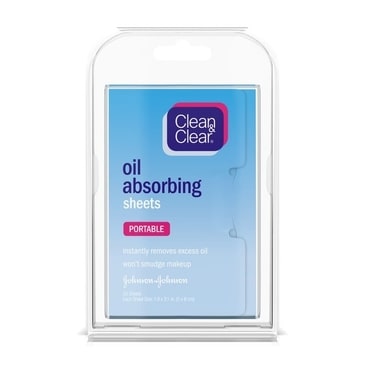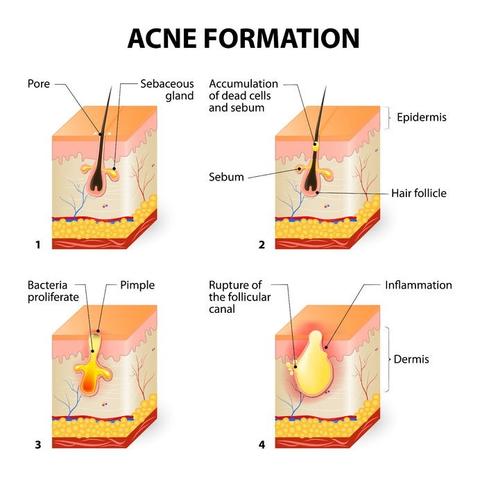Oh, those pesky pores! We all deal with them, and sometimes it feels like they’re impossible to avoid. But fortunately, there are ways to minimize enlarged pores and achieve a complexion so refined that you don’t even need to reach for the ‘blur’ filter on your selfies.
Now, before you start to think this sounds too good to be true, let us assure you that we’re not promising magical overnight transformations. Instead, we’re here to provide you with proven techniques and science-backed tips to gradually minimize your pores and reveal the best version of your skin.
What Are Pores and Why Do They Enlarge?
Pores are small openings on your skin’s surface that allow oil, sweat, and hair follicles to pass through. They play an important role in maintaining healthy skin, but when they become enlarged or clogged with dirt, oil, and debris, they can become more visible.
Factors such as genetics, age, sun damage, and poor skincare habits can all contribute to enlarged pores. You can’t permanently shrink your pores, but you can definitely make them less noticeable with the right care.
6 Common Mistakes to Avoid
To help you achieve a healthy complexion, we’ve compiled a list of common mistakes to avoid when trying to minimize your pores:
1. Using too much bloating paper

Excessive blotting can be harsh on the skin, especially if it is sensitive. It can cause irritation and inflammation over time, affecting the overall health and appearance of the skin, including the size of pores.
If you use it once a day (like before or after your work), that should be okay but if you’re constantly using it multiple times a day every couple of hours, it can strip the skin of necessary oils, which actually prompts the skin to increase oil production to compensate.
2. Forcibly extracting pimples
We’ve been warned by our dermatologists and estheticians—don’t pop pimples! As you press on the pimple, you are introducing bacteria and dirt from your finger into the zit and it usually results in an angrier blemish, blood, scabbing and even scarring.
Excessive pressure on a pimple can harm the surrounding tissues, including the walls of the pore. This can lead to a loss of skin elasticity and contribute to the appearance of larger pores.
3. Not Exfoliating
The outermost layer of our skin is composed of dead skin cells that naturally shed over time. However, if these dead cells are not effectively removed, they can accumulate on the skin’s surface. This accumulation can contribute to clogged pores, making them appear more noticeable and enlarged.
It is crucial to incorporate regular exfoliation into your skincare routine to address the lack of exfoliation and its potential impact on pore size. Exfoliation can be achieved manually (using physical exfoliants such as scrubs) or chemically (using products containing exfoliating acids such as glycolic acid or salicylic acid).
4. Over-exfoliating
Exfoliation is an important step in skincare because it helps to remove dead skin cells, unclog pores, and promote skin renewal. Over-exfoliating, on the other hand, can do more harm than good, resulting in a variety of skin issues, including the appearance of larger pores.
The skin’s natural barrier helps retain moisture and protect against environmental factors. Over-exfoliating can compromise this barrier, resulting in dehydration and a weakened skin structure which can also contribute to the appearance of larger pores.
5. Using Non-Comedogenic Ingredients

Comedones (clogged pores) can take the form of blackheads/whiteheads, and are caused when the pores of your skin become clogged with oil, debris, or dirt.
If you have acne-prone or very oily skin, it’s particularly beneficial to look for non-comedogenic ingredients. Unlike comedogenic ingredients, they don’t clog pores and allow skin to breathe, remain hydrated, and keeps it free from breakouts. Here’s a comprehensive list of comedogenic and non-comedogenic ingredients.
6. Not Removing Makeup
Leaving makeup on your skin overnight is a skincare mistake that can lead to various skin issues. Throughout the day, makeup, natural oils, and sweat produced by your skin can accumulate in your pores. When you don’t remove your makeup before going to bed, these substances can get trapped in your pores and cause clogs. Clogged pores become larger and more visible, contributing to uneven skin texture.
Wearing makeup without removing it properly can also contribute to premature ageing. The makeup particles, combined with environmental pollutants, can generate free radicals that break down collagen and elastin, resulting in wrinkles and fine lines.
If you wear heavy makeup, consider using the double cleansing method to allow your skin to breathe and regenerate overnight.
7. Eating Junk Food
Anything that’s high in sugar content is actually really bad for pores because refined sugar spikes our insulin which leads to inflammation, which also causes an increase of sebum production in our skin and that leads to clogged pores which leads to breakout and acne.
To promote healthy skin and minimize the appearance of larger pores, it’s important to adopt a balanced lifestyle. This includes eating a healthy diet, staying hydrated, managing stress, getting regular exercise, practicing good skincare habits, and protecting your skin from excessive sun exposure.
How to Treat Enlarged Pores
Treating enlarged pores involves a combination of skincare practices, professional treatments, and lifestyle changes. Here’s a detailed guide on how to address and minimize enlarged pores:
1. Daily Cleansing is Key
Keeping your pores clean is the first step. Cleanse your face twice a day with a gentle cleanser. This helps remove excess oil, dirt, and debris from your pores, which can cause them to appear larger.
Another important factor to consider is the pH level of your cleanser. The skin’s natural pH ranges between 4.5 and 5.5. Using a cleanser with an excessively high pH (alkaline) can damage your skin’s moisture barrier. This disruption can cause dryness, sensitivity, and even the appearance of pores to worsen.
2. Chemical Exfoliation
Regular exfoliation helps remove dead skin cells that can contribute to pore congestion. Opt for chemical exfoliants like salicylic acid or glycolic acid, which can penetrate deeper into the pores and promote cell turnover.
Incorporate exfoliation twice weekly, preferably in the evening skincare routine. If you are new to exfoliation, begin slowly. Always use a moisturizer and sunscreen afterward to keep your skin hydrated and protect yourself from sun damage.
3. The Power of Retinol
Over-the-counter retinol skincare products can be beneficial in improving skin texture and minimizing the appearance of pores. They work by increasing cell turnover and promoting collagen production. Start with a lower concentration and gradually increase usage.
Retinol can make your skin more sensitive to the sun, so it’s best applied at night. Follow up with a broad-spectrum sunscreen during the day.
4. Hands Off Your Face
It’s common to rest your chin or cheeks on your hands while working or studying. This can transfer dirt, oil and bacteria onto your skin, contributing to pore congestion and other skin issues. Break this habit by keeping your hands away from your face.
With reduced face touching, you lower the likelihood of inflaming existing pimples and making skin conditions worse.
5. Opt for Clay Masks
Different types of clay, like kaolin and bentonite, draw out impurities and excess oil, unclogging pores and making them appear smaller. Clay masks can also help control oil, refine skin, and provide a tightening effect. Use 1-2 times a week for oily or combination skin, and less often for drier skin. Remember to always moisturize afterward to prevent over-drying.
6. Sunscreen is non-negotiable
UV rays penetrate the skin’s layers and can cause collagen and elastin fibres to break down. Collagen and elastin are important components for maintaining skin elasticity and structure. When these fibres are damaged, the skin loses firmness and pores can appear larger.
Using a broad-spectrum sunscreen with an SPF of at least 30 can help prevent these negative effects while also maintaining the health and appearance of your pores.
Conclusion:
Taking care of your skin and minimizing pores doesn’t have to be complicated. By following the advice of dermatologists and avoiding common mistakes, you can achieve easily healthy skin.
Remember, consistency is key. A simple yet effective skincare routine that includes gentle cleansing, regular exfoliation, moisturizing, applying actives and sun protection can go a long way in keeping your pores in check.
For more on fashion & beauty, follow Major Mag on Instagram and Pinterest.
